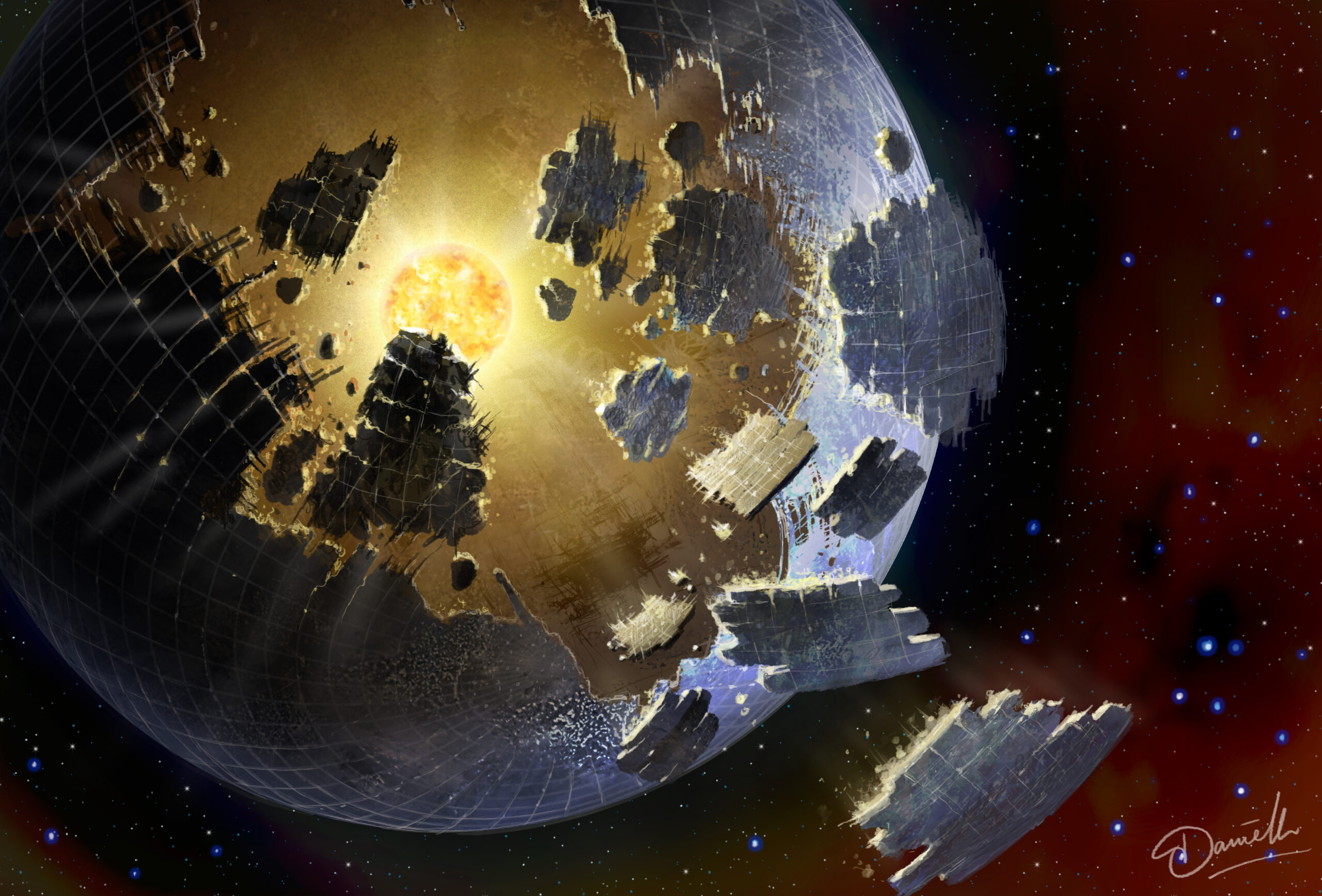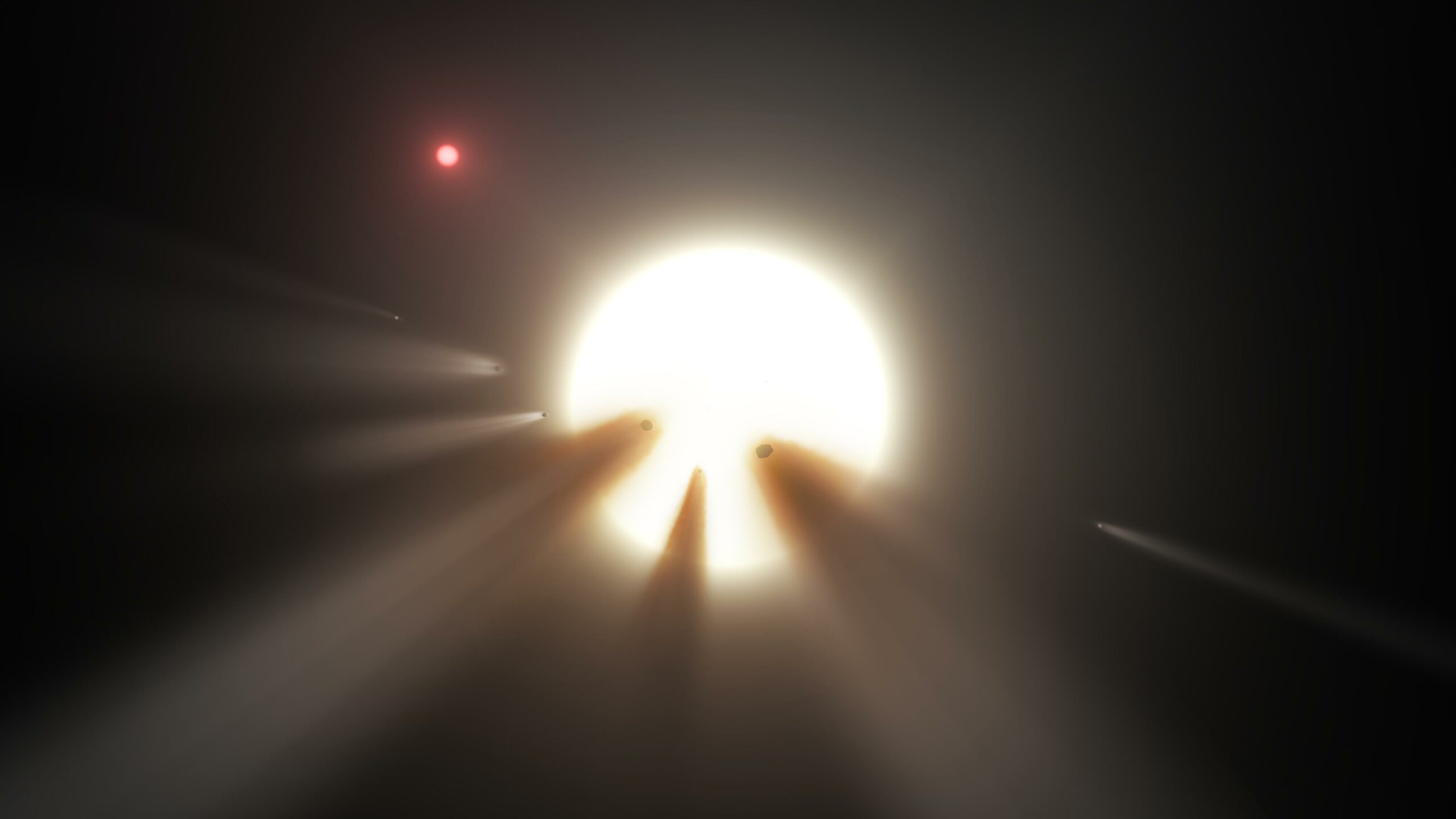

“The most mysterious star in the galaxy” was bound to spur some scientific debates.
KIC 8462852, located 1,480 light years away, perplexed scientists when they saw its light dip by as much as 20 percent. There’s no satisfactory explanation for it. The two most popular guesses, that the light is being obscured by either a family of giant comets or a huge structure built by aliens, don’t quite fit with the data. (Not to mention the fact that aliens should always be your last guess when you’re doing science.)
The mystery deepened when another researcher—astronomer Bradley Schaefer from Louisiana State University–found that KIC 8462852 (aka “Tabby’s Star”) may also have been dimming over the last century by an unprecedented amount. This made the comet hypothesis even less likely, since something like 648,000 giant comets would have to be circling that star to dim it.
However, Schaefer’s results were called into question earlier this month by grad student Michael Lund and data analyst Michael Hippke. Their work was largely misreported by the media when a press release made it seem as if they had debunked the alien hypothesis and proven the comet hypothesis, when really all they did was cast doubt on the long-term dimming theory. (Rest assured that Tabby’s Star is definitely still bizarre.)

It was those public misconceptions that partially drove Schaefer to respond to the critiques in a rather scathing blog post last week. He says he is concerned that the erroneous reports were hurting the Kickstarter campaign to raise funds to monitor the star. Schaefer writes:
Despite all the publicity, it is Hippke and Lund who are “definitely wrong,” he says. The explanation is pretty technical, so we’ll try to keep it simple.
Star wars
Both papers analyzed old photographic plates collected by telescopes from the 1890s to the 1980s. Schaefer found that the light from Tabby’s Star dropped by about 16 percent over a century, whereas other stars’ light curves stayed flat. Lund and Hippke saw other stars dimming by similar amounts and concluded the effect was just an artifact of different telescopes being used over time.
Schaefer’s blog post counters that Lund and Hippke used the wrong comparison stars. Their check stars were crowded together with other stars, he says, which makes the light curves from those stars unreliable.
Schaefer’s second critique of the Lund and Hippke papers is that they used the wrong calibration technique, which often shows slopes in light curves.
“No experienced researcher” would make these choices, writes Schaefer. He, on the other hand, has “a vast experience with the Harvard plates, with nearly continuous work since 1979, something like 50 papers in refereed journals, plus five papers on the theory of photographic photometry.”
While a scientist cannot prove a point based on experience alone–he needs data to back it up–Schaefer notes that Harvard astronomer Josh Grindlay has arrived at the same measurements.
Harsh.
Keivan Stassun, a co-author on the Hippke and Lund papers, declined to respond to Schaefer’s criticisms. “The proper forum for working out scientific debates is the peer-reviewed, refereed literature in which the plural of ‘ad hominem’ is not data,” he told Popular Science, referring to the ad hominem style of argument that attacks a person rather than the data.
A bright outlook
Let’s not get too sucked into the drama. Caltech astronomer Ben Montet explained to Popular Science that the problem stems from the fact that “there aren’t many people who have considered looking for long-term trends in this data before.” Scientists aren’t sure what sorts of things could cause the photographic plate data to be wonky, how often those mishaps happen, and what effects they might have.
The short answer, says Montet, is that “the star looks like it’s dimming on the plates, and we as a community are still trying to figure out if that’s normal or not.”
But there is hope that scientists will get to the bottom of the debate, and the answer could come from an independent data set–possibly Montet’s.
Schaefer’s blog post notes that if Tabby’s Star really is dimming over the long-term, they should be able to detect a very, very faint dimming of the star over the four years that the Kepler telescope monitored it. Montet has combed through the Kepler data, and his preliminary conclusion is that the star is indeed fading.
However, the team is still going analyzing the data, and the study’s not published yet, so it’s still premature to say “case closed.” We could see another paper in coming weeks to add to the debate.
